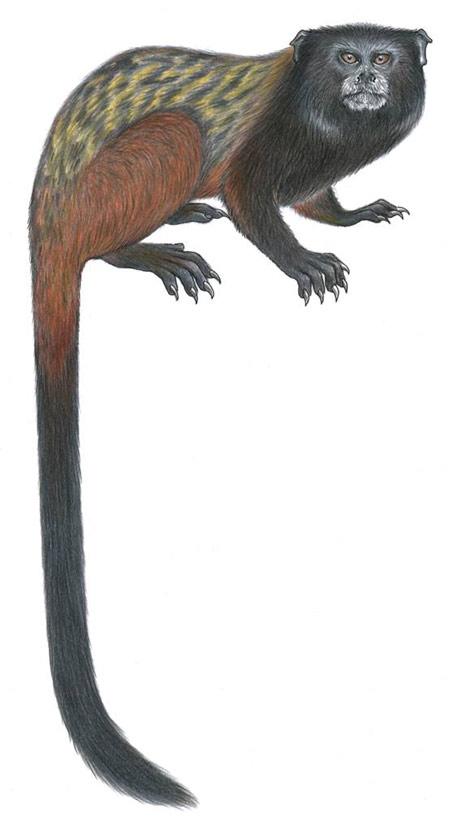New Long-Tailed Monkey Discovered in Amazon

A new monkey subspecies with quite a long tail has been discovered in a remote region of the Amazon in Brazil.
The monkey is mostly gray and dark brown in color, with a distinctly mottled "saddle." It weighs somewhat less than a pound (213 grams) and is 9 inches (240 millimeters) tall with a foot-long (320 millimeter) tail.
The little primate is related to saddleback tamarins, which include several species of monkeys known for their distinctively marked backs. The newly described distinct subspecies, announced today, was first seen by scientists on a 2007 expedition into the state of Amazonas in northwestern Brazil.
Researchers have dubbed the monkey Mura's saddleback tamarin (saguinus fuscicollis mura) named after the Mura Indians, the ethnic group of Amerindians of the Purus and Madeira river basins where the monkey occurs. Historically this tribe was spread through the largest territory of any of the Amazonian Indigenous peoples, extending from the Peruvian frontier today (Rio Yavari) east to the Rio Trombetas.
The monkey's discovery was published in the June online edition of the International Journal of Primatology. Authors of the study include Fabio Röhe of the Wildlife Conservation Society (WCS), José de Sousa e Silva Jr. of Museu Paraense Emílio Goeldi, Ricardo Sampaio of the Instituto Nacional de Parquisas de Amaozônia, and Anthony B. Rylands of Conservation International.
The monkey is threatened by several planned development projects in the region, particularly a major highway cutting through the Amazon that is currently being paved, Röhe said. Conservationists fear the highway could fuel wider deforestation in the Amazon over the next two decades. Other threats to the region include a proposed gas pipeline and two hydroelectric dams currently in the beginning stages of construction.
"This newly described monkey shows that even today there are still major wildlife discoveries to be made," said Röhe, the study's lead author. "This discovery should serve as a wake-up call that there is still so much to learn from the world's wild places, yet humans continue to threaten these areas with destruction."
Get the world’s most fascinating discoveries delivered straight to your inbox.
The Wildlife Conservation Society helped establish the Mamirauá, Amanã, and Piagaçu-Purus Sustainable Development Reserves in Brazil, which represent some of the largest protected blocks of rainforest on the planet.
WCS researchers have discovered several new monkey species in recent years: the Arunachal macaque, discovered in India in late 2004; and the Madidi monkey and Kipunji discovered in Bolivia and Tanzania respectively in 2005. In 2008, Jean Boubli, who now works for WCS, discovered a new species of uakari monkey in the Amazon.
The GEOMA project at the Ministry of Science and Technology of Brazil helped to support the project that led to the discovery of the monkey.
- Video – Clever Primates
- Gallery: Endangered Wildlife
- Top 10 New Species



